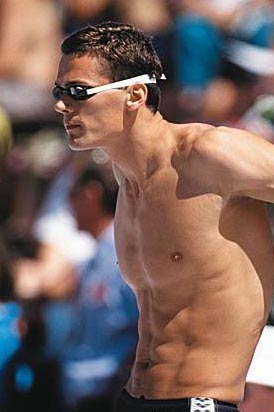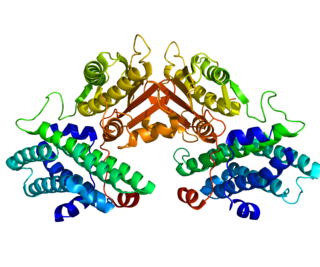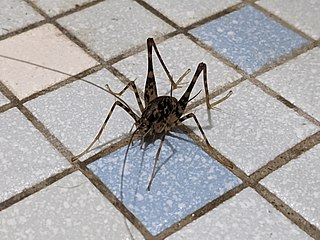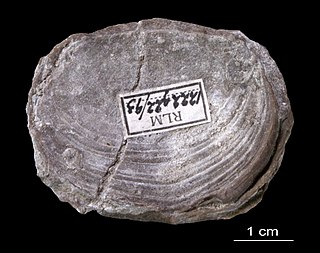
In physics, Faddeev–Popov ghosts are extraneous fields which are introduced into gauge quantum field theories to maintain the consistency of the path integral formulation. They are named after Ludvig Faddeev and Victor Popov.

Alexander Stepanovich Popov was a Russian physicist who was one of the first people to invent a radio receiving device.

Corixidae is a family of aquatic insects in the order Hemiptera. They are found worldwide in virtually any freshwater habitat and a few species live in saline water. There are about 500 known species worldwide, in 55 genera, including the genus Sigara.

The subfamily Catantopinae is a group of insects classified under family Acrididae. Genera such as Macrotona may sometimes called "spur-throated grasshoppers", but that name is also used for grasshoppers from other subfamilies, including the genus Melanoplus from the Melanoplinae.

The grasshopper subfamily Acridinae, sometimes called silent slant-faced grasshoppers, belong of the large family Acrididae in the Orthoptera: Caelifera.
Popov, or Popova, is a common Russian, Bulgarian, Macedonian and Serbian surname. Derived from a Slavonic word pop. The fourth most common Russian surname, it may refer to:

The men's 100 metre freestyle event at the 1996 Summer Olympics took place on 22 July at the Georgia Tech Aquatic Center in Atlanta, United States. There were 60 competitors from 54 nations. Nations had been limited to two swimmers each since the 1984 Games. The event was won by Alexander Popov of Russia, the third man to successfully defend an Olympic title in the 100 metre freestyle. Gary Hall, Jr. returned the United States to the podium in the event after a one-Games absence. Gustavo Borges, the silver medalist in 1992, earned bronze. Popov and Borges were the 9th and 10th men to earn multiple medals in the event.

The Campodeidae are a family of hexapods belonging to the order Diplura. These pale, eyeless hexapods, the largest of which grow to around 12 mm in length, can be recognised by the two long, many-segmented cerci at the end of the abdomen. Abdominal spiracles are absent.

The Ochteridae comprise a small family of insects. Eight genera with about 80 species have been described. They occur worldwide along the shore of various types of water and the greatest diversity is in tropical regions. They are "true bugs", being members of the order Hemiptera, and are in the suborder Heteroptera. Ochteridae commonly are known as the velvety shore bugs. They resemble the Saldidae shore bugs and have lengths ranging from 4.5 to 9 mm (0.18–0.35 in).

Pyruvate dehydrogenase lipoamide kinase isozyme 4, mitochondrial (PDK4) is an enzyme that in humans is encoded by the PDK4 gene. It codes for an isozyme of pyruvate dehydrogenase kinase.

Pyruvate dehydrogenase kinase isoform 2 (PDK2) also known as pyruvate dehydrogenase lipoamide kinase isozyme 2, mitochondrial is an enzyme that in humans is encoded by the PDK2 gene. PDK2 is an isozyme of pyruvate dehydrogenase kinase.

Diestrammena is a 'camel' or 'cave-cricket' genus in the family Rhaphidophoridae. Species in the genus are native to Asia, including Japan.
The USSR Premier Basketball League, or Soviet Union Premier Basketball League, was the first-tier men's professional basketball league in the former Soviet Union. The league existed from 1923 to 1991, as the top professional basketball league of the Soviet Union, and from 1991 to 1992, as the top professional basketball league of the CIS. In the years 1924, 1928, 1934, 1935, 1936, 1956, 1959, 1963, and 1967, the league was contested by city teams, regional teams, and state national teams, rather than individual sports clubs.

Trimerellida is an extinct order of craniate brachiopods, containing the sole superfamily Trimerelloidea and the families Adensuidae, Trimerellidae, and Ussuniidae. Trimerellidae was a widespread family of warm-water brachiopods ranging from the Middle Ordovician to the late Silurian (Ludlow). Adensuidae and Ussuniidae are monogeneric families restricted to the Ordovician of Kazakhstan. Most individuals were free-living, though some clustered into large congregations similar to modern oyster reefs.

Orthotylini is a tribe of plant bugs in the family Miridae. There are more than 230 described genera in Orthotylini.

Cymidae is a family of true bugs in the order Hemiptera. There are about 12 genera and at least 60 described species in Cymidae.

The Orthopteran subfamily Aemodogryllinae contains about sixteen genera of camel crickets. It was named after AemodogryllusAdelung, 1902 - which is now considered a subgenus of Diestrammena.

Tachycines is a genus of camel crickets in the subfamily Aemodogryllinae and tribe Aemodogryllini. Some authorities had placed the type species, T. asynamorus, in the genus Diestrammena, but recent papers returned this to the subgenus Tachycines (Tachycines), with a substantial number of new species recently described.

Gryllini is a tribe of crickets and typical of the family Gryllidae. Species are terrestrial, carnivorous or omnivorous and can be found in all continenents except Antarctica.
















